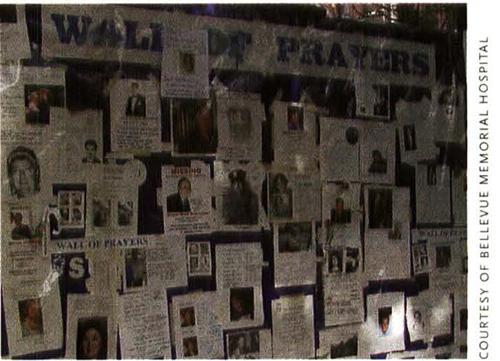Sign up for the Family Tree Newsletter Plus, you’ll receive our 10 Essential Genealogy Research Forms PDF as a special thank you!
Get Your Free Genealogy Forms
"*" indicates required fields
Most monuments are stone and concrete — made to last forever. But the Bellevue Wall of Prayers, a makeshift bulletin board covered with images of those missing after the Sept. 11, 2001, World Trade Center attacks, is one of that day’s most enduring symbols. Now preservation experts are trying to make this poignant memorial as permanent as granite.
The 170-foot-long, 8-foot-tall wall was created as New Yorkers in search of loved ones stapled and taped missing-person fliers to a plywood construction fence outside Manhattan’s Bellevue Memorial Hospital.
“The fliers capture the victims’ faces, names, places of work, descriptions of their appearance, clothing and personal histories,” says Museum of the City of New York (MCNY) <www.mcny.org> spokesperson Sarah Henry. Visitors added poems, candles, flowers and flags, and hospital staff hung signs bearing the name Wall of Prayers.
On-the-spot, aggregate memorials like the Bellevue wall emerged during the late 20th century from Hispanic and Asian traditions. Their spontaneity and visibility make them authentic records of public reactions to tragedies — but they’re also vulnerable to damage from weather and passers-by. Bellevue hospital workers covered the wall with plastic for short-term protection. Then, during a November 2001 ceremony, MCNY staff dismantled and carted it away for evaluation.
The panels are in fair condition, but the fliers are deteriorating, says MCNY’s chief registrar, Ellin Burke. “The papers and the ink printing methods are common, everyday materials that are not meant to last,” she says.
The two-year preservation plan, created with the Smithsonian Institution’s help, calls for cleaning all the materials, removing the tape and lining each flier with a nonporous material called Melinex to protect the paper from acid and lignin in the wood.
ADVERTISEMENT


